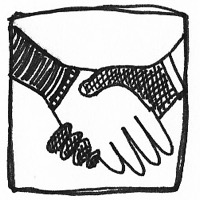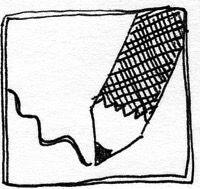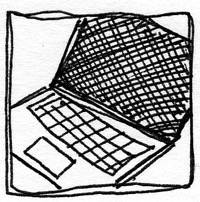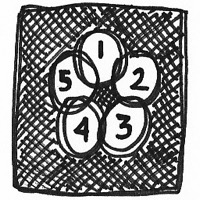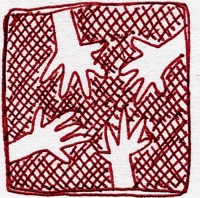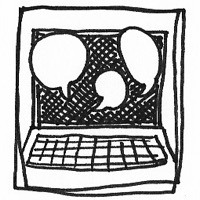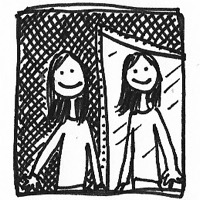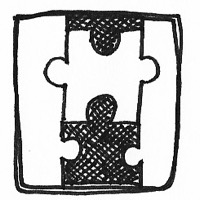As described in the Using the Rhetorical Canons to Support Multimodal Communication section, multimodal composition theory inflects our curriculum design for ENGL 219 in resonant ways, particularly as related to our use of the classical rhetorical canons. Our approach has been to make the canons concretely applicable to ENGL 219 through specific curricular requirements concerning multimodal outputs and interactions.
While the distillation of the canons relative to multimodal pedagogy offered on the Using the Rhetorical Canons page shared relatively succinct "application scenarios" for the canons Invention, Arrangement, Style, and Delivery, the exegesis of the relationship between Memory and our multimodal eTC curriculum we want to offer now reveals the complex nature of this relationship.
In face-to-face classes and in online classes, teaching students how Memory—remembering, reflecting, reconsidering—has a transformative capacity is always a difficult task. In our eTC curriculum, we "double down" on the prominence of this canon as the semester draws to a close, given that, relative to multimodal composition, the capacity to recall and reapply in a new and different mode for a new and different audience signals the very cyclical and integrative nature of the canons themselves and of the writing process as an application of them. As Sharon Crowley (1993) stated in a study of (post)modern considerations of the canon of Memory, in ancient or "classical" contexts, "memory was not only a system of recollection . . . it was a means of invention" (p. 35). Indeed, by using our online discussion board forum and students' individual video and textual reflections as domains of Memory, we create another opportunity for the interlacing of learning outcomes, as invention of new understandings of one's own learning results from the process of reflection on the canon of Memory. The relationship between the canons, then, becomes recursive, or cyclical. Students' discussion board engagements offer an enactment of Memory as reflection, such that this relationship becomes tautological (reflection is Memory is reflection is Memory, etc.).
Kathleen Blake Yancey et al. (2014) stated simply (in a sample assignment prompt) that "reflection allows us the opportunity to process knowledge and then apply that knowledge. Through reflection, we can come to an understanding and interpret what we have learned" (p. 167). In language designed for students, Yancey et al. pointed out that reflective writing is designed to "process knowledge." Indeed, it allows students to do something with what they have learned, and in our eTC course, one of the activities we want students to do at the end of the semester is write and create reflectively, both in static text and in the visual and audial forms of a brief video.
As the prompt below reveals, we ask students to connect the outcomes of Delivery and Memory by using various modes for their reflective practice, specifically static text (sometimes with hyperlinks) and video. In students' discussion board responses about these canons, we ask that they create videos that specifically address how they felt the course prepared them to successfully enter a community of 21st-century communicators as literate citizens who could engage in productive dialogue and create multimodal texts in either extracurricular activities or the workforce. Yes, in some ways, we might be "feeding" our students a response, that they are prepared to enter increasingly technologized workplace and social contexts. But we do this so that they at least argue, think about, and provide evidence of their preparation, based on their multimodal engagements in our course.
Below, Figure 1 conveys the text of one of the final discussion boards of the semester. The detailed text in this discussion board prompt shows the ways in which the expectations for communication across modes and through connective concepts was actuated in the discussion board space. Figure 2 shows the text-only exchange between two students in the discussion board; by clicking here, you can see what the exchange looked like in the discussion board's original interface. Figure 2, for example, shows the responses of one pair of students to our request to reflect on the canon of Memory (our focal outcome in this study) in a rich-media format; the example also shows a student linking to a YouTube video, opening the door to a discursive exchange with a classmate.
Outcome 5 Discussion Board Prompt
Throughout the semester (in weeks 6 and 11), you've been writing self-assessment reflections regarding your learning of multimodality and how you've learned the outcomes of the course. Now let's talk about fifth element: Memory. How have the self-assessment reflections that you've written for your Google Site for Projects 1 and 2 improved your multimodal projects or impacted your composing processes (i.e., peer review drafts, IA drafts, final instructor drafts, etc.)? For this discussion, we really want you to talk through how the reflections you've written have made you a better writer in terms of composing multimodal texts. Also consider how the reflections, the overall work you've done in the course, and the course materials have encouraged you to enter a community of 21st-century technical communicators. Please explain how you developed metacogntively (meaning, your own understanding of your own learning, via the class's assignments, texts, and discussions) in a short one- to two-minute video. You can create a narrated Powerpoint, a short Jing video, an iMovie, or a vlog to create this video. Think outside the box when creating this short video (meaning, don't just rely on Powerpoint!). So, for this week's post, don't create a written paragraph in response to the Memory outcome, but create a multimodal project that is very brief (one to two minutes) instead.
Post a response also to at least one classmate's post. Do you understand Memory in the same way your peers do? Is there anything they've said/shown that will help you better understand the outcome and, consequently, become more effective as a technical writer? Is there anything someone else said that illuminates the outcome for you?
Your comments to your peer should contain approximately 150 words of substantive comments.
Figure 1
Sample Student Responses: Outcome 5 Discussion Board
Student 1's Original Post:
Here is the link to my video: http://youtu.be/jiABoeTHXT8
Sorry for my slight mispronunciation!Student 2's Response:
Hi! I liked what you had to say in your video! I think it is always interesting to see how each person interprets something differently than the next. I like how you gave specific examples of how the reflections allowed you to achieve your outcomes and compose your pieces. I feel like some of the things you say are a little repetitive, however you did get your point across. I would have liked to hear you talk about how you have been able to connect with those in the 21st century. For example, I simply said that in modern day society we rely so much on technology and we hardly read things out of a book anymore because I would rather Google them. Overall you did a great job! I also liked your effects! It made your presentation engaging!
Figure 2
These examples capture our course's intention: to prepare students to enter into and impact 21st-century digital communities as vital and contributing members, confident in their abilities to exchange information across modes and to reflectively connect to their own learning experiences and the experiences of others. Whether or not after learning initial concepts related to TPC communication these students choose to pursue this field, we intend for all of our eTC students to enact Memory as recalling, remembering, recognizing, and reconstituting within our course, across courses in our curriculum, across disciplines in the university, and well beyond the walls and digital parameters of the university context.
